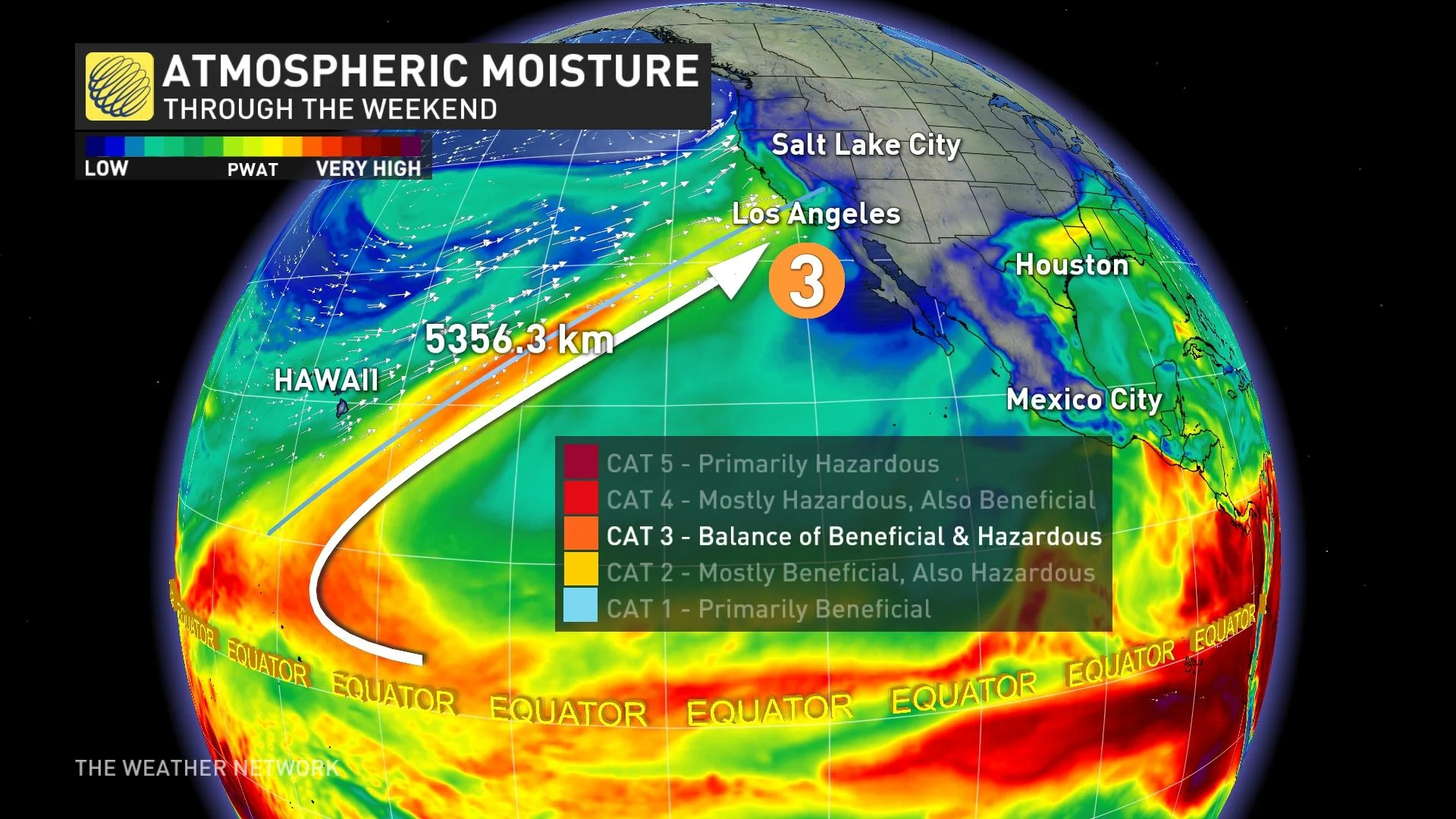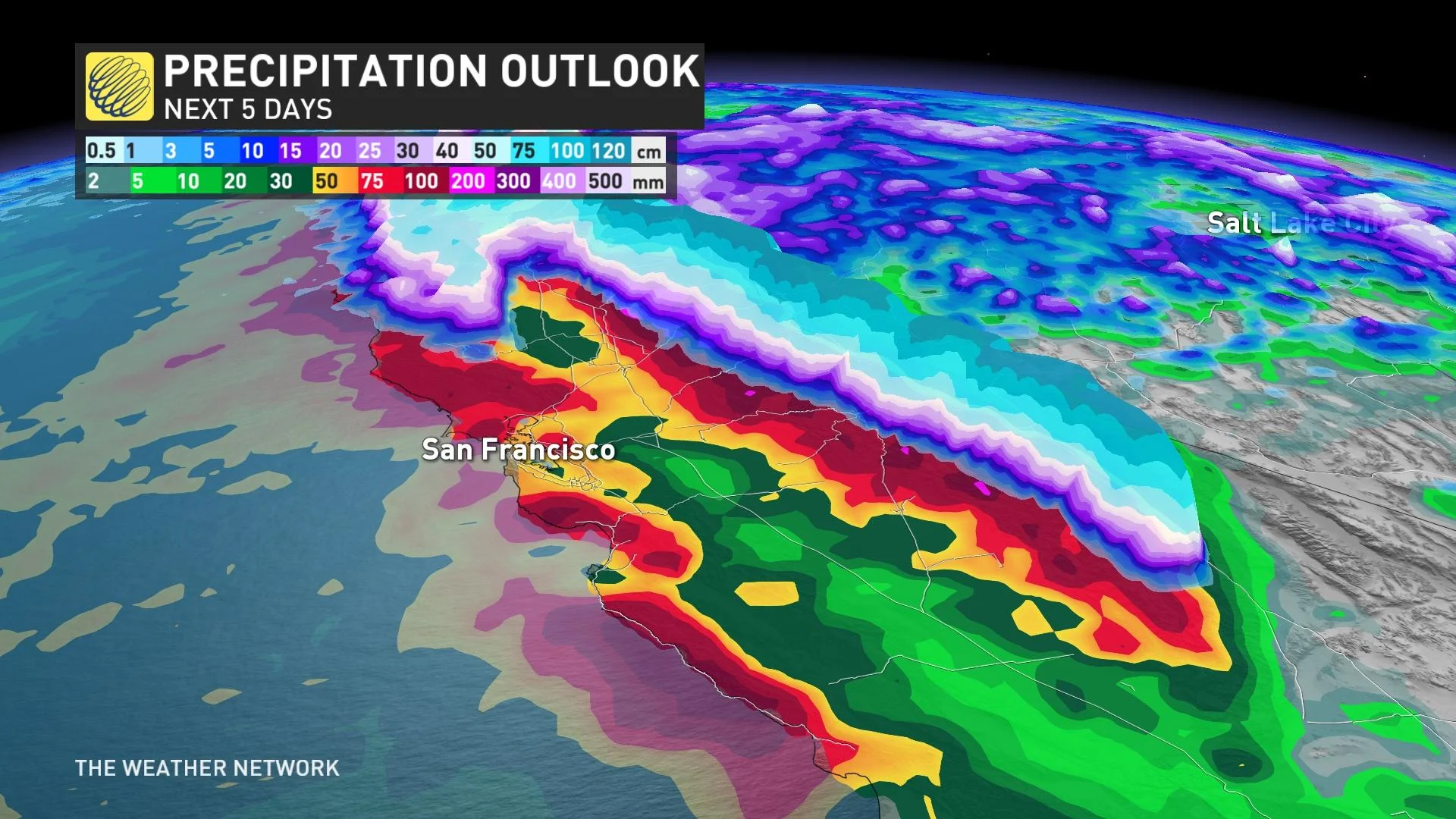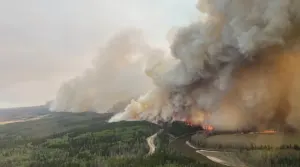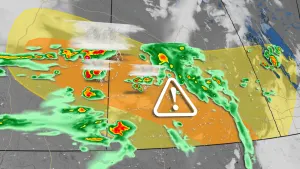
Calif. faces high-risk flood threat after weeks of drenching storms
A long-lived drought shriveled up in a month. A high-risk flood threat took its place.
California’s once-epic drought eroded faster than a grape turns into wine.
A relentless train of atmospheric rivers washing over the Golden State in recent weeks performed the herculean task of replenishing its fertile soils, refilling its critical waterways, and burying the Sierra Nevada in snow piled as tall as your average giraffe.
It’s such an overwhelming reversal that areas scorched by historic fires not long ago are on high alert for potential flooding over the next week as another atmospheric river washes over the state.
DON'T MISS: Ice falls in Hollywood as wild setup fans California blizzards, historic heat
Epic rains wash away a long-lived drought
The unimaginable amount of water that’s fallen on California over the past month has taken a giant bite out of its long-lived drought.
Valentine’s Day saw 84.6 per cent of California mired in some level of drought. While that was down from near-total coverage at the beginning of the year, it was still a significant drought for the United States’ largest agricultural producer and a state that’s home to one million more people than the entire country of Canada.

But then it started raining and snowing. And then it rained and snowed some more.
Two weeks later, by February 28, a train of moisture-rich Pacific storms reduced California’s drought by nearly half.
The United States Drought Monitor (USDM) found just 49 per cent of the state remained in a drought by the end of February, reduced even further to just 43 per cent on March 7. The vast majority of California’s remaining drought conditions are confined to the Sacramento River Valley and unpopulated pockets of the Mojave Desert.
Falling drought numbers are impressive on their own, but little puts the scale of the precipitation into perspective quite like the mammoth piles of snow in the Sierra Nevada.
A research station in Donner Pass has recorded 1,542 cm (607 in.) of snow since the beginning of November, with more than one-third of that stunning total piling up in just the past two weeks. The region has seen more than 200 per cent of its normal snowfall for the season, with some areas more than quadrupling their normal snowfall to date.

This incredible turnaround is readily apparent in satellite imagery, with a desiccated landscape at the beginning of October transforming into a lush sea of green vegetation and snow-brushed mountains by the start of this month.
WATCH: How do we know when weird weather is caused by climate change?
Life-threatening risk for flooding develops this week
There’s more where that came from.
A potent atmospheric river aimed at the U.S. West Coast will ferry a tremendous amount of tropical moisture straight from the equator to California through the middle of next week.

This atmospheric river will provide a series of systems with a vast reservoir of moisture to produce widespread heavy rains and high-elevation snows through next week.
A surge of warmer temperatures aloft, arriving with the tropical moisture, will send freezing levels climbing high into the mountains, leaving the risk for rapid snowmelt at lower elevations.
Heavy rains and runoff from snowmelt will contribute to the risk of flooding, especially in the Central Valley, the fertile heart of the state that receives runoff from the mountains.
“Excessive runoff may result in flooding of rivers, creeks, streams, and other low-lying and flood-prone locations,” the U.S. National Weather Service said in a flood watch for Paradise, California, a town almost entirely razed in 2018 by the state’s most destructive wildfire ever recorded.

The U.S. Weather Prediction Center (WPC) issued a rare “high risk” for excessive rainfall for parts of central California on Friday.
Forecasters with the WPC don’t issue these scale-topping risks lightly. The agency found that 83 per cent of all flood-related damage in the U.S. occurred on high-risk days, and these dangerous setups resulted in more than one-third of all the country’s flood-related deaths.
Droughts and floods are linked throughout California’s history
California has a long history of atmospheric booms and busts, with terrible floods and long droughts happening in quick succession as far back as its early years of statehood in the mid-1800s.
Today, though, California’s lurches between parched and soaked come at a more rapid pace—and at a greater cost.
The summers of 2020 and 2021 combined witnessed six of the state’s ten-largest wildfires on record, the tragic result of a dry spell so bad that nearly half the state fell into an “exceptional” drought, the most dire category on the USDM’s scale.
These western extremes aren’t exclusive to California. Folks across British Columbia likely feel a pang of empathy watching this unfold.
B.C. experienced an unprecedented heat wave in June 2021, followed immediately by a tragic series of destructive wildfires. Just a few months later, a series of atmospheric rivers unleashed historic flooding across parts of the South Coast.










